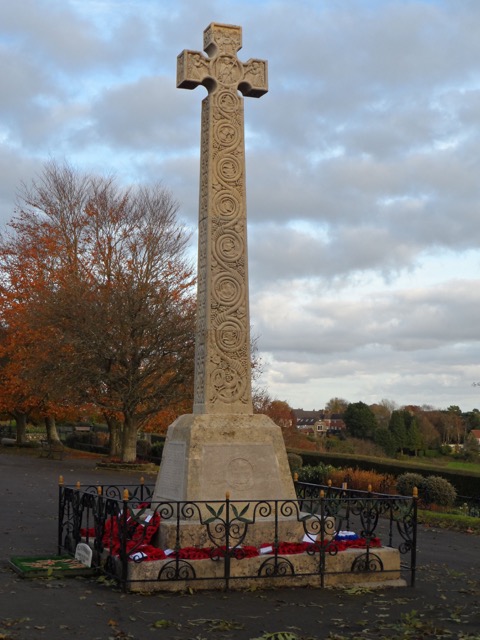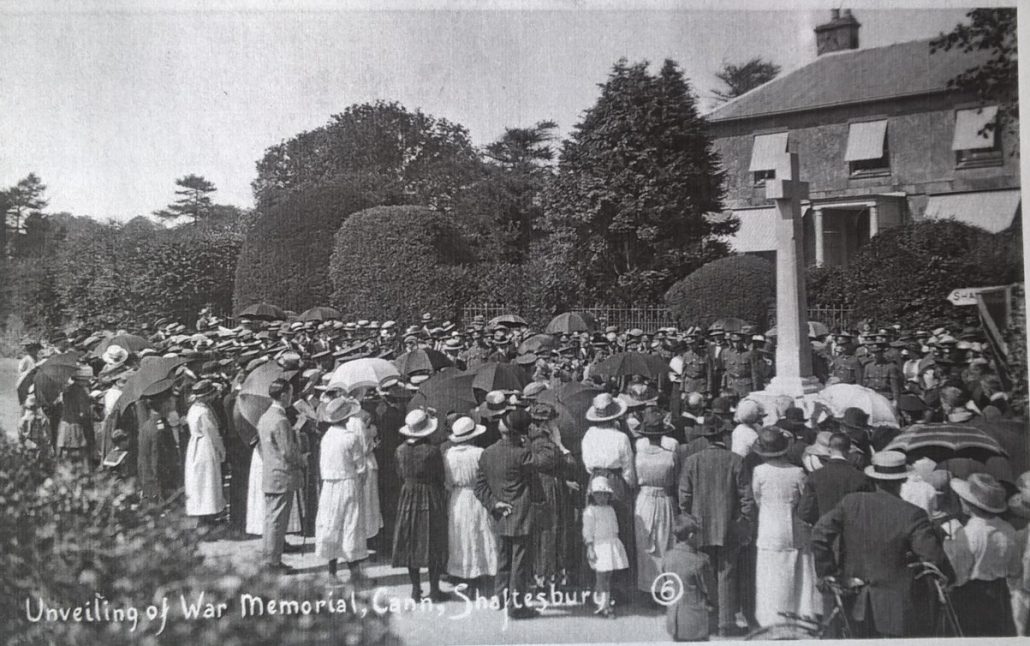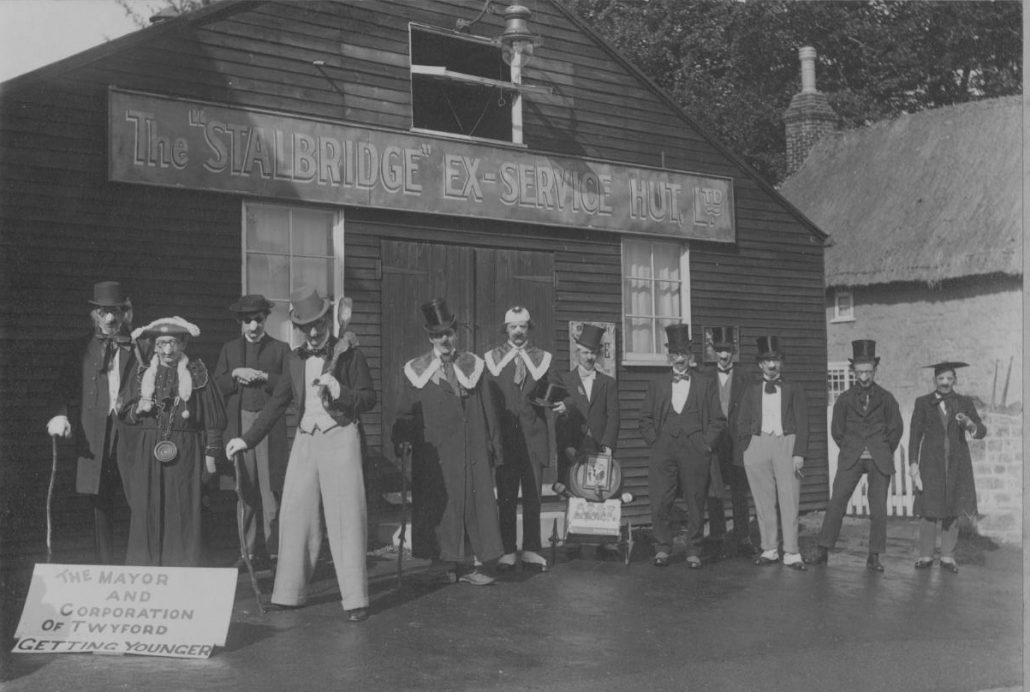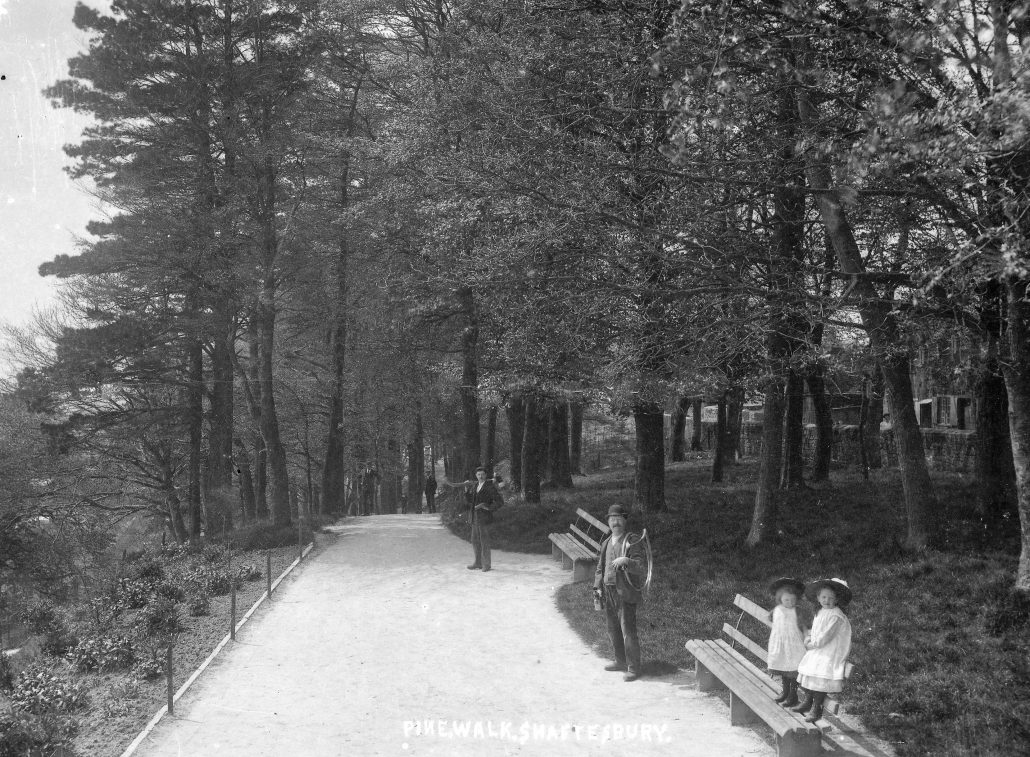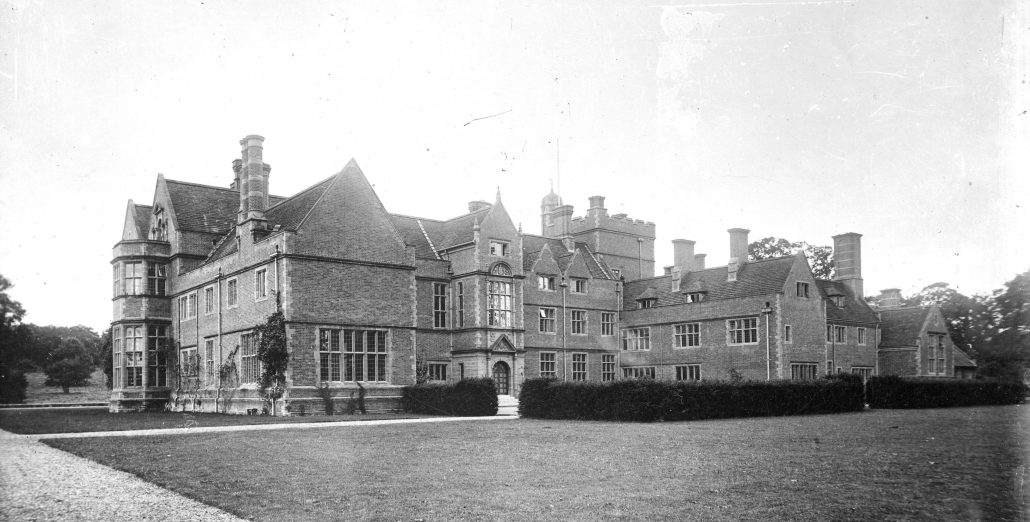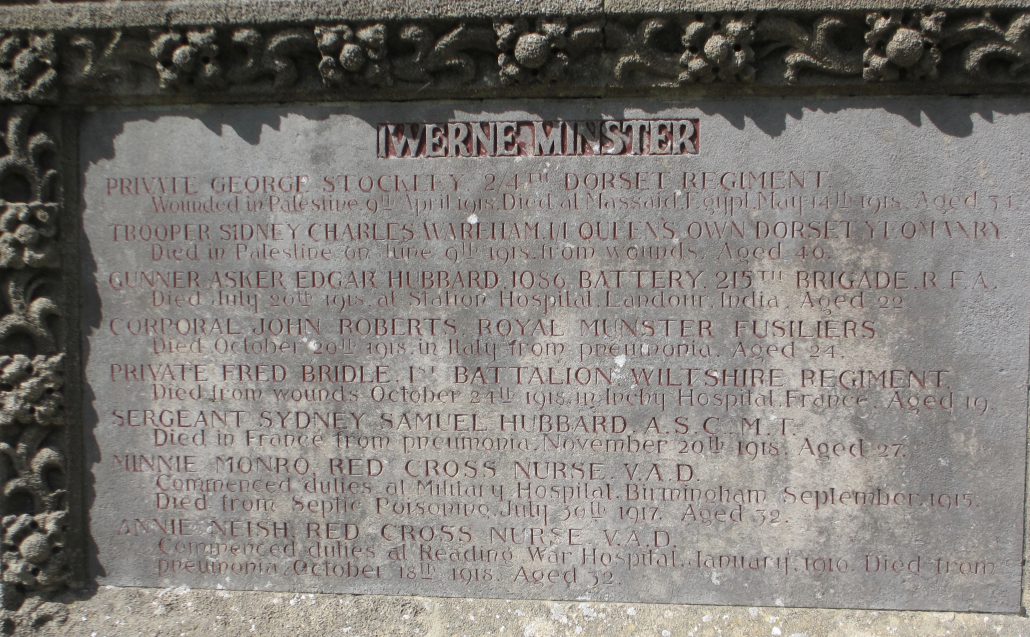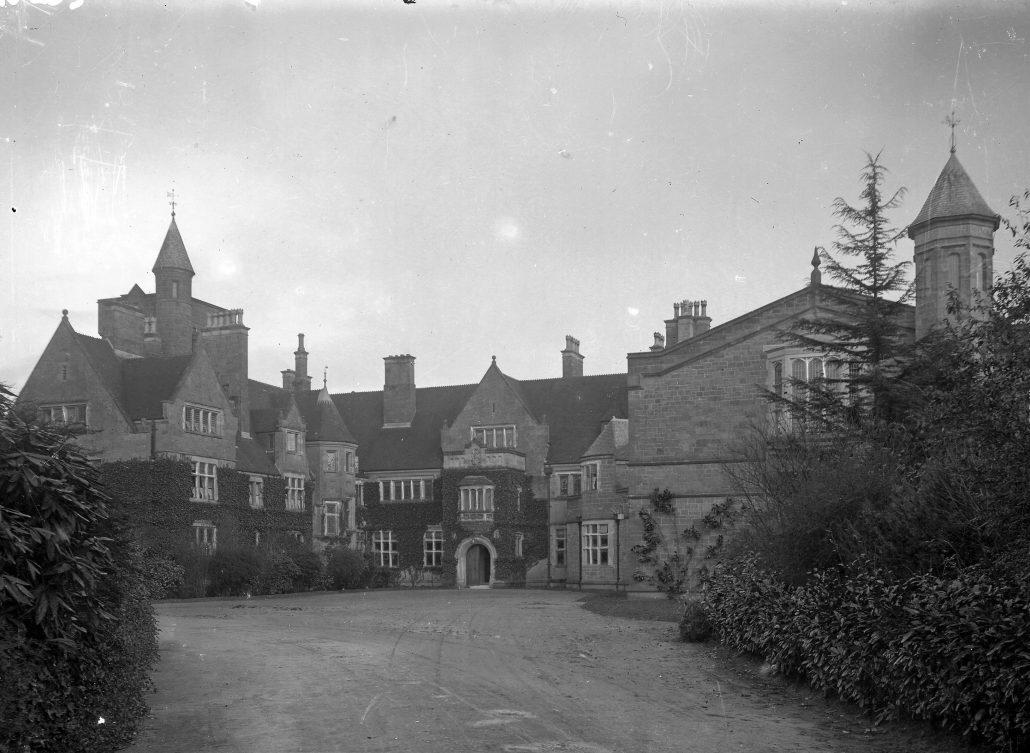Legacy of The Great War
After the War
1918
The end of the war in Europe on November 11th 1918 was greeted with great rejoicing and celebration, but the difficulties associated with the conflict were by no means over. The country, including many towns and villages in Dorset, was in the grip of a flu epidemic. In Bourton over a hundred foundry employees were absent through illness, and the school was closed.
Soldiers were still serving abroad, or were prisoners of war, and in Fontmell Magna, arrangements were made to send Daily Express tuck boxes to men serving abroad, continuing a tradition of sending Christmas gifts for every year of the war. Prisoners of war started returning home, with stories of their treatment in enemy hands, and one Fontmell Magna man, Sidney Mowlem , was given a watch paid by subscription to mark his return after what he had endured in prisoner-of-war camp.
Celebrating the end of the war in November 1919
Flags were hoisted and in many cases work was abandoned as people gathered to celebrate, attend special services in church, or ring peals of bells. In Shaftesbury bells were rung and bunting adorned the streets. The mayor asked shops to close between three and four o’clock for a united meeting of thanksgiving and prayer outside the Town Hall. In the evening the band of the Motcombe Boy Scouts paraded through the town.
New houses for returning soldiers and their families were built on Coppice Street, and two ex-army huts from Compton Chamberlayne were re-erected at the western end of Bimport, and are still occupied in 2017.
War Memorials
In August 1916 Lord Shaftesbury asked the Western Gazette to publish a correspondence between himself and the Bishop of Salisbury concerning the erection of village crosses as memorials to those who had died during the war. Both were agreed that these would be a fitting tribute and Lord Shaftesbury wanted to share the suggestion with the public.
In February 1919 the town council started discussions about an appropriate war memorial. Alderman Borley suggested deconsecrating St Peter’s Church and turning it into a public hall, and another member wanted to enlarge the lower part of the Town Hall, again for use by the public. The War Office also offered trophies to town councils, and Shaftesbury Town Council opted for a German gun. A howitzer was duly delivered.
In Fontmell Magna it was unanimously agreed to erect a marble memorial cross by the village maypole, listing the names of those who had died in the war.
In 1920, Lady Stalbridge unveiled the Motcombe War Memorial which was dedicated by the Bishop of Salisbury. In 1928 the Memorial Hall was officially opened, although by this time Lord and Lady Stalbridge had sold the Motcombe estate and moved away.
Beautiful Eyam Cross Unveiled by Earl of Shaftesbury
On that delightful promenade, “The Park”, one of the connections between the higher and lower portions of Shaftebury, there took place on Sunday afternoon one of the most impressive and soul stirring ceremonies in the history of the old borough. It was Shaftesbury’s day with the dead. Here upon this windswept walk, in the chilly, moist atmosphere of an October day, hundreds of townspeople honoured the memory of the 60 men of this City of Pallador who gave up their lives in the service of their King and Country.
The ceremony was preceded by a procession from the Town Hall. It was led by the local constabulary, followed by the Comrades Band, The Territorials and several hundred ex-servicemen from Shaftesbury and Gillingham. The Mayor and members of the Town Corporation followed, with the Shaftesbury School Cadets, Boy Scouts, Girl Guides and various friendly societies. After a service in Holy Trinity Church, the memorial was unveiled by Lord Shaftesbury, and wreaths laid, including many from the families of the fallen men.
Western Gazette report 28th October 1921
1925
Six years after the end of war, ex-servicemen were still experiencing difficulties obtaining pensions, some of which were only temporary or conditional. Some men who were only slightly disabled and ready to work did not want to take any pension, but were advised to do so. The British Legion held a conference in Gillingham, seeking to advertise their role to a rather disinterested public. By 1924, the British Legion had already helped over half a million cases of distress. It was suggested that local committees met in public houses to attract more men to their cause.
After the war, Lord Stalbridge gave land for a meeting place for ex-service men on Bleke Street, known as the Stalbridge Hut. In 1925 when the Motcombe estate was sold, the club was granted a 99 year lease at an annual rent of 2/6d (12p).
Sales of the town and local estates
In the decade after the end of the Great War there were far-reaching changes in land ownership. Many of the owners of large estates were faced with heavy death duties and increasingly unprofitable agricultural properties, which forced several significant sales in the Shaftesbury area. These usually included several farms, water mills, schools, inns, shops and private houses.
Sales of Shaftesbury in September 1918 and May 1919
Lord Stalbridge initially sold the town for £75,000 in September 1918 to a Londoner, Mr White. The contract required him to offer the town for resale to the mayor and corporation, or to a representative of the tenants, before selling it on elsewhere. Mr White gave the corporation seven days to come up with £80,000, or the tenants a month. After his purchase of the town, Mr White commented thus: ” I saw a bill, with the heading ‘Town for sale’. (Shaftesbury) is one of the prettiest little villages I have seen. To call it a town seems almost ridiculous. Yet I suppose one must, for it has its own mayor and corporation”.
(Western Gazette, September 6th 1918)
The mayor and corporation could not afford to buy the town, so The Syndicate stepped in and bought it for £80,000 a few days later. ‘The Syndicate’ comprised three influential figures in Shaftesbury, Mr Robert Borley, owner of The Grosvenor Hotel; Dr W.J. Harris; and Mr H. Viney, manager of Stratton, Sons and Mead, the largest commercial business in town. The Syndicate held a further auction on May 28th and 29th 1919, dividing the Shaftesbury property into 313 lots.
Before the final auction took place, the Shaftesbury Tenants’ Association was formed to protect the interests of the current tenants. It was feared that The Syndicate might sell the town to outsiders, contrary to Lord Stalbridge’s wishes. In the event most of the former tenants were able to buy their own houses and businesses, taking out loans where necessary to pay for them. The town corporation bought the Fire Station, the Market House, and the Cattle Market. The corporation also bought allotments in Coppice Street, where they intended to build new houses, and the Boy Scouts’ Hall.
After the sale, the Shaftesbury Tenants’ Association was dissolved and the Borough Welfare Association set up in its place, with a six part programme:
The provision of housing for the working classes
Public ownership of the water supply
The provision of a cemetery (Mampitts)
The erection of a war memorial on the Park Walk
The provision of allotments
Extension of the Borough sewers together with an extension of the borough boundaries.
The boundaries were extended so that comprehensive changes could be made to the town’s infrastructure, and the acreage of the borough was increased from 156 to 514.
Unemployed miners from South Wales were brought in to extend sewers throughout the town.
Two public spaces were saved for the people of Shaftesbury. The corporation bought the Park, and Dr Harris bought Castle Hill and gave it in perpetuity to the town. The Abbey ruins were withdrawn from sale, as they were considered to be an important monument which should be properly administered, and a suitable bidder was not forthcoming. The Abbey was scheduled as a historic monument in 1924.
It was agreed that the Post Office and the Literary Institute in Bleke Street would be leased for 21 years, continuing the previous arrangements with Lord Stalbridge.
Robert Borley bought Barton Hill House for his home in the sale and the bowling club committee bought the bowling green. The recreation ground on Barton Hill was created in the 1920s.

